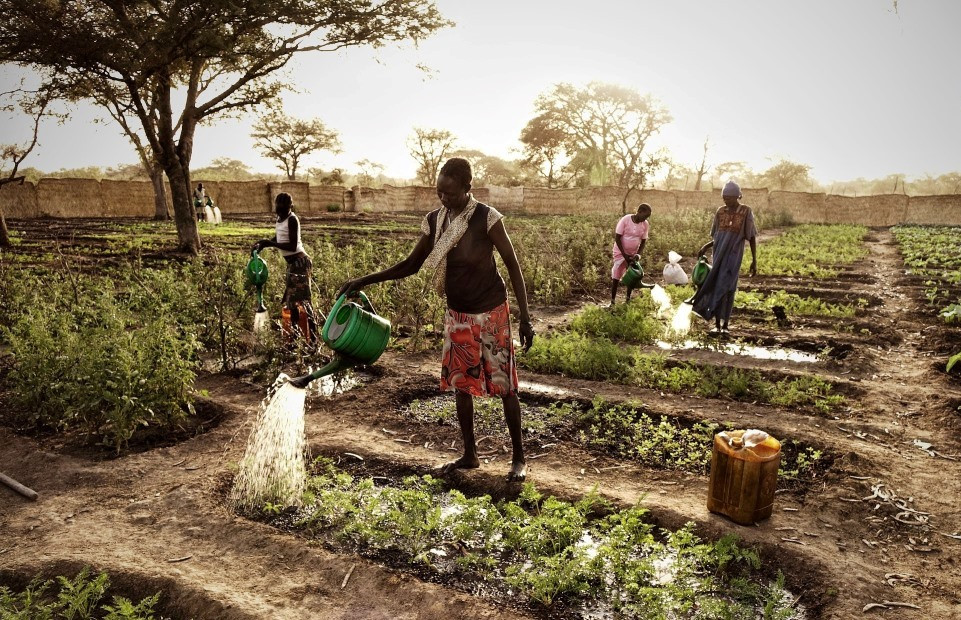Multi-Sectoral Interventions Are Key To Prevent Undernutrition in South Sudan
Published: Jun 8, 2015 Reading time: 3 minutes Share: Share an articleAccording to the latest anthropometric surveys, about 16% of children living in the Northern Bahr el Ghazal State of South Sudan are acutely undernourished, having too low weight for their height. Many more are stunted, resulting in a lower cognitive and physical development and higher vulnerability to diseases. While undernutrition is often associated with lacking food, available research shows that other factors have an equally important role to play.

“Our nutrition security survey showed that 53% of children under two had, in the past weeks, diarrhoea, mainly due to poor hygiene practices, lacking water treatment, and inadequate child care. This means that they are losing lots of the nutrients they eat and then more easily become undernourished”, explains Michele Favaro, the manager of a joint PIN-Cesvi nutrition security program and emphasizes: “If we really want to reduce undernutrition, agriculture alone will not do the job. We need to focus on simultaneously addressing the real reasons why so many children are undernourished.”
To address the multi-sectoral causes of undernutrition, PIN, in cooperation with its Allaince2015 partner, Cesvi, therefore is implementing an EU-funded project: Resilient Agriculture for Improved Nutrition (RAIN). Its agricultural component puts the main emphasis on enabling local families to grow and consume a greater variety of nutritious crops, such as dark green vegetables.
Farmers learn how to use animal traction
While increasing the dietary diversity is important, many children become undernourished during the lean season, when food from the previous harvest runs out of stock and families have to wait for the coming harvest. To enable families to produce a larger quantity of staple crops, hundreds of local farmers were supported in using animal traction, enabling them to till a larger area of land. “This practice has been common before the war but after the conflict, very few people had ploughs or knew how to use them”, explains James Mathiang, local project team leader.
#~gallery-1318~#
A crucial part of the project also assists local shop owners to import, promote, and sell currently non-available seeds, tools, and other agricultural inputs essential for ensuring long-term food and nutrition security and reducing aid dependency.
Malnutrition is caused by multiple factors
 To ensure that improved diets aren’t lost due to diarrhoea and other infectious diseases, the RAIN project includes carefully designed behavioural change strategies targeting a limited number of the most influential hygiene and childcare practices. “Our team conducted a barrier analysis which helped us to understand the main determinants of the targeted practices. Now we’ll work with local communities on addressing identified barriers to following the practices which can really make a positive difference in children’s health,” outlines Michele Favaro RAIN’s plans for the coming period.
To ensure that improved diets aren’t lost due to diarrhoea and other infectious diseases, the RAIN project includes carefully designed behavioural change strategies targeting a limited number of the most influential hygiene and childcare practices. “Our team conducted a barrier analysis which helped us to understand the main determinants of the targeted practices. Now we’ll work with local communities on addressing identified barriers to following the practices which can really make a positive difference in children’s health,” outlines Michele Favaro RAIN’s plans for the coming period.
The RAIN project follows PIN’s Integrated Programming for Improved Nutrition (IPIN) approach. “IPIN is based on a simple but effective premise: undernutrition is caused by multi-sectoral factors which can be addressed only by evidence-based, multi-sectoral solutions,” explains Petr Schmied, PIN’s Lead Advisor for Strategy and Quality Development. An IPIN-style RAIN project, funded by the European Commission, will be completed in late 2016 by a thorough external evaluation whose results will be shared externally. As of mid-2015, IPIN-style projects were implemented by PIN also in Ethiopia, DRC, Angola, and Afghanistan.
